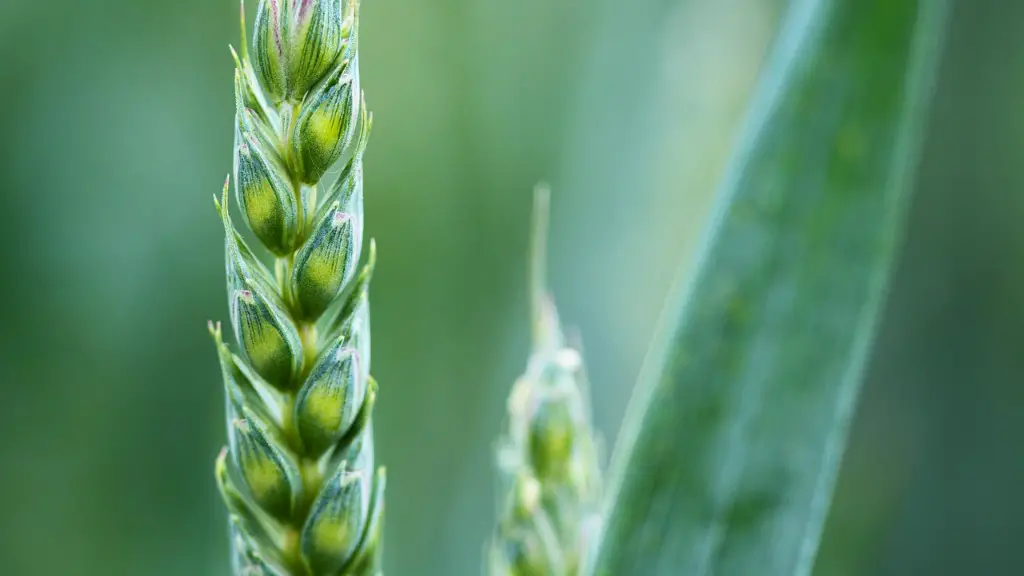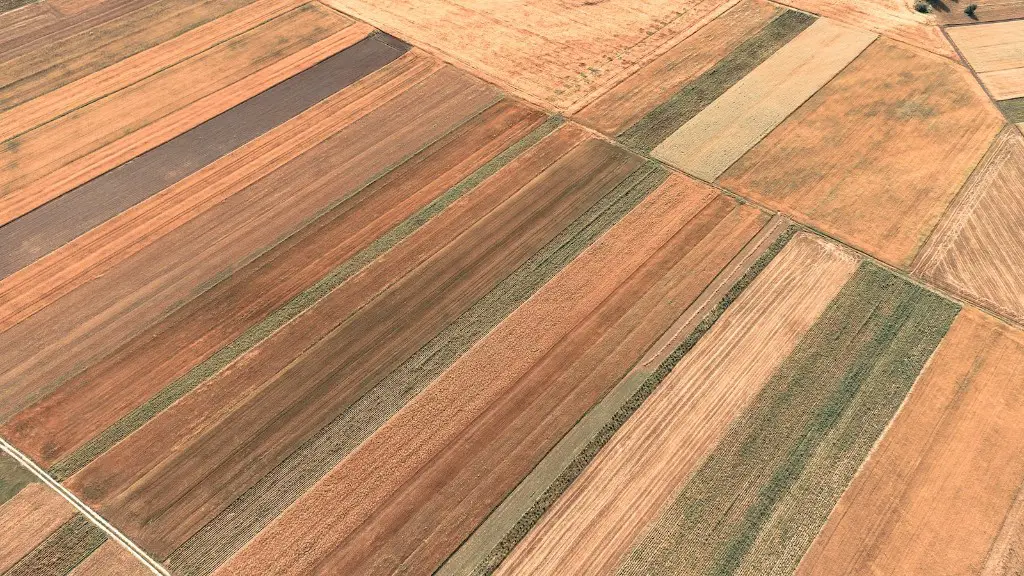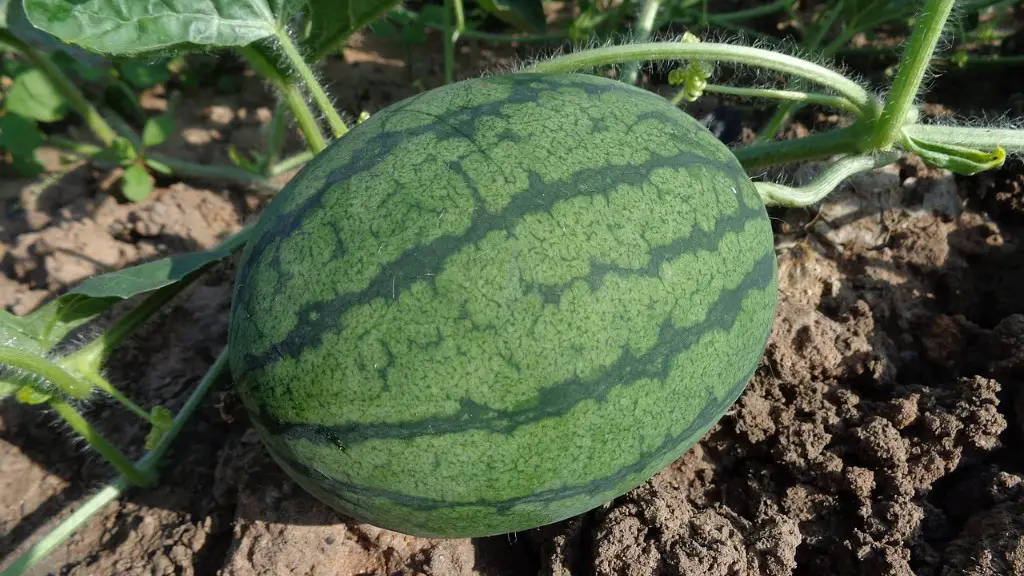Agriculture is an essential component of countries’ economies as well as their global competitiveness. However, some countries have no agricultural land, meaning they are deprived of the potential agricultural productivity and the associated economic benefits. These countries have a variety of other ways to sustain their economy, but lack the food security, employment and economic stability typically found in countries that have arable land.
Because of limitations or resources and/or geography, some countries do not possess any agricultural land. One such example is the Maldives, which is composed of many small islands surrounded by vast bodies of water in the Indian Ocean. These islands provide little to no land to produce crops, meaning the Maldives has to rely on imports and aquaculture to meet its food needs. Additionally, these islands are susceptible to storm surges and flooding caused by climate change, making agricultural potential increasingly limited.
Similarly, Qatar is a great example of a country devoid of agriculture land. Most of Qatar is desert, with majority of the nation’s population living in the urbanized West part near the Persian Gulf. This part is known as the ‘al-wusta’. As with the Maldives, Qatar relies heavily on imports to meet its food needs and the farming activity is quite limited but is prevalent in specific regions close to the southern border with Saudi Arabia.
Singapore and Hong Kong are two other countries with no arable land. Singapore is a densely populated island-nation that’s just about half the size of London. While agriculture only accounts for less than 2% of its GDP, Singapore relies on imports to meet almost all of its agricultural needs. The city-state does grow some crops in greenhouses, vertical farming structures and on rooftop gardens. The same applies for Hong Kong, which is a major port city, with most of its land being used for urban housing and commercial space.
For these and other countries, traditional agriculture is not the only way to provide food, employment, and economic stability. Instead, they look to the future with innovative approaches like aquaponics, hydroponics, rooftop gardens and vertical farming to generate value and promote sustainability. These technologies enable the sustainable cultivation of food, regardless of the availability of arable land.
Grassroots efforts
In addition to the technological approaches, some countries have also looked to grassroots efforts to develop their agricultural industry. People who live in these arid or island nations are relying on local institutions, conservation efforts and other forms of community-level support to develop sustainable agricultural production.
In the Maldives, the government has invested heavily in promoting self-sufficiency and food security through aquaculture. This has included the development of improved fisheries, increased access to water, and the introduction of new technology. In Qatar and other countries, local communities have also been using seed saving techniques to ensure the preservation of traditional and native crops that can be cultivated in arid or salty climates.
In UAE and several other Gulf Cooperation Council (GCC) states, the public and private sector have come together to promote agri-tourism, an approach that has seen a variety of innovative initiatives designed to promote the value of local and traditional agricultural products. These include traditional markets, food shows and demonstrations, as well as education programs.
In other instances, some countries have been exploring urban agriculture initiatives. These have included the vertical farming of crops in city centers as a viable alternative to traditional rural agriculture.
Changes in the Environment
Climate change has also played a significant role in reducing arable land in some countries. As temperatures continue to rise, soil moisture has been reduced at an accelerated rate, leading to drought-like conditions in some parts of the world. This has been particularly evident in arid or desert-like countries, forcing a shift toward more drought-resistant and resource-efficient cropping systems.
Other environmental changes such as increasing water scarcity, land degradation and ocean acidification, have further added to the need to find sustainable agricultural approaches, regardless of the availability of arable land. In some countries, these changes have been compounded by agricultural policies designed to limit agricultural activities in certain areas, leading to further restrictions on the types of crops that can be grown.
In addition to the technological approaches, some countries have also looked to creating partnerships to increase the efficiency of their agricultural systems. For example, some have formed regional and international agreements to increase the availability of seeds, expertise and supplies. in order to create more efficient and secure agricultural networks.
Innovation and Economic Development
In response to the declining availability of arable land due to environmental and climatic conditions, some countries have looked to innovation and economic development as a solution. Innovation has taken the form of commercially oriented research and development aimed at increasing the viability of new and existing agricultural technologies. These techniques have been used to increase crop yield and standards of production, while also reducing the amount of water and inputs required. This has allowed farmers to increase their yields and potential earnings, while also lowering their environmental impact.
Economic development has also been used to promote agricultural growth in countries with limited agricultural land. In many of these countries, innovative business models have been developed to stimulate the agricultural sector. These have included value-added services such as farming education,land leasing agreements and agritourism. These initiatives have not only helped to increase the productive capacities of farmers, but also to attract new investments and improved infrastructure.
Other nations have employed the use of progressive tax incentives, subsidies and other fiscal policies in an effort to make farming a more lucrative and sustainable occupation for the people living in these countries. This has allowed these nations to develop their agricultural sector without having to rely on traditional farming methods.
Inventory and Control of Land Use
To ensure efficient utilization of limited agricultural land, some countries have implemented land management and inventory practices. These policies have included the mapping of existing agricultural land and the development of land use regulations. In some cases,mechanisms such as land lease agreements have been established to ensure that the land is used in accordance with the designated purpose, while also mitigating the potential for conflicts between land users.
In addition to these land management policies, some countries have made investments in precision agriculture technologies. These tools enable farmers to identify and address potential issues in the field, such as soil fertility or pest infestations. This has allowed for more precise planning and efficient management of resources, resulting in improved productivity for farmers.
Another approach that has been used in some countries is the development of agricultural insurance programs. These programs help to protect farmers from losses due to weather and other unforeseen events, such as insufficient water supplies or pests. In this way, farmers can be assured of some protection from the economic impacts of a failed crop.
Finally, some countries have also invested in the development of research and development programs aimed at improving yields and reducing the amount of inputs required. These programs have included the development of more efficient irrigation systems and the promotion of more sustainable farming and land management practices.
Conclusion
In conclusion, there are a number of countries that do not possess agricultural land, but have the capability to achieve agricultural sustainability in other ways. These have included the implementation of innovative technologies, the promotion of grassroots efforts, changes in the environment, economic development initiatives, and land management practices. As such, even though these countries may not have any agricultural land, they still have the potential to achieve food security and economic stability, as well as increased environmental sustainability.





